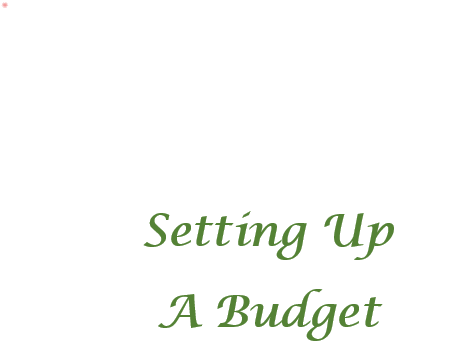Most people are setting up budgets for the new year as part of their resolutions. If you have not already done this it may seem daunting. The process is actually easy and should not be feared.
When setting up budgets you want to keep track of two main groups:
- your inflows
- your outflows
That is really the main thing to note. There are so many budgeting tips like the 50/30/20 rule or the 70/20/10 rule. It can be confusing to know what to follow and this is one of the reasons why many people fail to set up a budget.
If you are just starting out with setting up budgets you just need to make sure your inflows are greater than your outflows. Depending on your income and your geographical location, it may be very difficult to keep your housing costs under 30% of your income like some people suggest. If you have very low income you may not be able to save 10% of your income like even some other budgeting sites claim.
So what can you do if you don’t fit neatly into one of the ‘rules’? You make your own starter budget and work from there!

The first step is sit down and realistically write down what you spend in an average month. Don’t try to make your amounts fit any percentages. Of course it is easier to do this in a spreadsheet or Google document so you can edit later, but paper works fine as well.
After you list everything you spend, convert the next column to percentages of your income. Most places suggest doing these percentages out of your gross or before tax income. I prefer doing it out of your net, or after tax income since that is what you actually have to spend! Whatever you do, just make sure to be consistent. You do not actually need to even set percentages when you first start budgeting, especially if you are very low income with high expenses.
After you have listed everything you realistically spend on, try to sort your expenses into Fixed and Variable.
Fixed Expenses
Fixed Expenses are those expenses that do not change over time. Every month you pay the same amount and you usually do not have control over the amount. Common Fixed Expenses are things like:
- rent
- phone bill
- car insurance
You can make a change to these expenses in the long run but generally they will be the same for a few months.
Variable Expenses
Variable Expenses are those expenses that can change every month. You have control over them and your consumption reflects how much you pay. Common Variable Expenses are things like:
- gas
- electricity
- food
You can immediately affect how much you spend on each of these items by simply consuming more or less of them next month.
Since you cannot change your Fixed Expenses in a short term you need to make sure your inflows or income can cover them first. If your income does not cover your fixed expenses then you have a serious problem. You may need to move, if possible to lower your rent. You may also need to take in a roommate if you cannot readily move.
After you look at your Fixed Expenses you can then move to the Variable Expenses. Subtract your total Fixed Expenses from your income and this is what you have left for your Variable Expenses. If you do not have enough to cover them then you need to find areas where you can cut a little.
This is the very basic part of setting up budgets and we can get more detailed once you master this part.
(If you are not reading this post at www.howisavemoney.net or in your feed reader, it may have been stolen from my site.)




Recent Comments